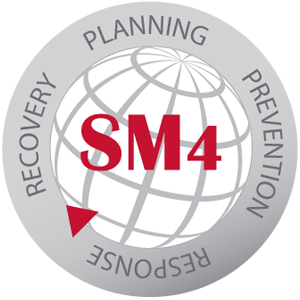By 2030, the global eVTOL aircraft market will transport 27 million passengers. Some vehicles will have a single pilot, while others will operate remotely or autonomously with only civilian passengers. Therefore, the companies commercialising this space have a duty of care to their employees and customers to ensure the safety of all on board.

Our health histories follow us when we travel. In fact, each year, 48,000 in-flight medical emergencies occur. When these medical incidents arise, the care provided in the first 15 minutes is critical to determining the event's outcome. After stabilisation, the time to receive medical care is vital in the victim's recovery.
Operators are familiar with the limitations of jet and prop aircraft, but these new vessels add new variables that can impact managing an in-flight medical event. eVTOL aircraft are currently designed to carry up to 10 passengers, may or may not have professional staff onboard and have a limited range or duration of time they can travel.
MEDICAL INCIDENTS THAT MAY OCCUR
The risk can vary from a mere inconvenience to a life-threatening situation. Trivial events are not uncommon and need to be stabilised so they don't evolve into serious ones. The more serious the event, the greater the chance it will disrupt your operation and passengers.
Based on hundreds of thousands of in-flight medical cases, issues like gastrointestinal and respiratory concerns, loss of consciousness, stroke and cardiac arrest are the most common. Therefore, special considerations need to be planned to address those medical risks.
Essential questions to ask about in-flight medical events include:
- How would CPR be administered if there is no floor space for the passenger to lay on?
- Is the medical kit or AED easy to access for all passengers?
- Is it safe for passengers to move about the cabin space while the aircraft is airborne?
- Would the conditions inside the cabin put the person providing aid in danger?
PREPARING FOR IN-FLIGHT MEDICAL EVENTS
The aviation regulations in place today for crewed flights ensure proper medical equipment is on board and crew members have the training to assist in emergencies. The same principles must be applied in this new market. When crew members are not on board to assist, the responsibility falls on passengers. Consequently, operators should consider the need to:
- Implement pre-departure health screenings. These assessments can help avoid sending an unwell passenger on a flight.
- Provide basic training on in-flight medical responses and a safety overview. Show passengers where to find life-saving equipment and provide instructions on operating an AED and CPR steps.
- Identify the best equipment to have on board. Products like self-guided AEDs, auto-injectors and other equipment can help a non-medical first responder confidently manage the event.
- Offer ground-based medical support. Providing access to a doctor when a medical event occurs gives a traveler a calm, confident ally while they triage their fellow passenger.
- Establish diversion protocols. Can the aircraft be rerouted to the nearest medical facility without creating a significant disruption? Should the aircraft find the nearest landing spot to meet emergency medical services to take over care? Based on the operational profile, there may be many options to help an unwell passenger.
RECOVERING THE MISSION AFTER AN IN-FLIGHT MEDICAL EVENT
Once the aircraft is safely on the ground and emergency medical services have taken over the passenger's care, what steps are needed to salvage the trip for the remaining passengers? With no more than 10 passengers on board, it is guaranteed everyone on the flight has been impacted by the event.
This may lead to mental health consequences and an overall negative experience if not handled correctly. In addition to getting passengers to their original destination, providing a follow-up with a mental health professional to help their transition should also be considered.
THE TIME IS NOW
After decades of passengered aviation travel, regulators began to define protocols for medical assistance on board the aircraft. How many lives could have been saved had there been foresight in the early 1900s to ensure medical safety for passengers? It is easy to see the benefits 100 years later, but because there was no precedent at that time, learning came from the many mistakes and successes along the way.
We now know that a robust and resilient operation requires that best practices for these medical events are in place before full commercialisation. Advances in air mobility should include learning from the airline industry and adapting those practices to future forms of travel.
About Global Aerospace SM4 Aviation Safety Program
The Global Aerospace SM4 Safety Program has revolutionized the way insurance specialists help their clients achieve higher levels of operational safety. SM4 was built on the concept of integrating four critical safety components: planning, prevention, response and recovery. Its mission is to help organizations manage risk, enrich training efforts, strengthen safety culture and improve safety management systems. https://sm4.global-aero.com/
Global Aerospace SM4 Aviation Safety Program Media Contact
Suzanne Keneally
Vice President, Group Head of Communications
+1 973-490-8588
Release ID: 487203

